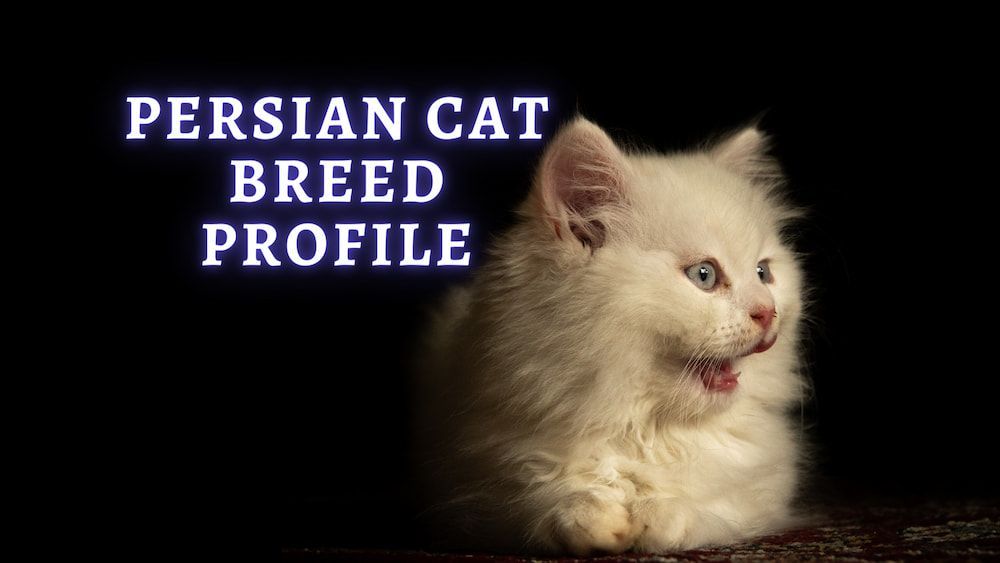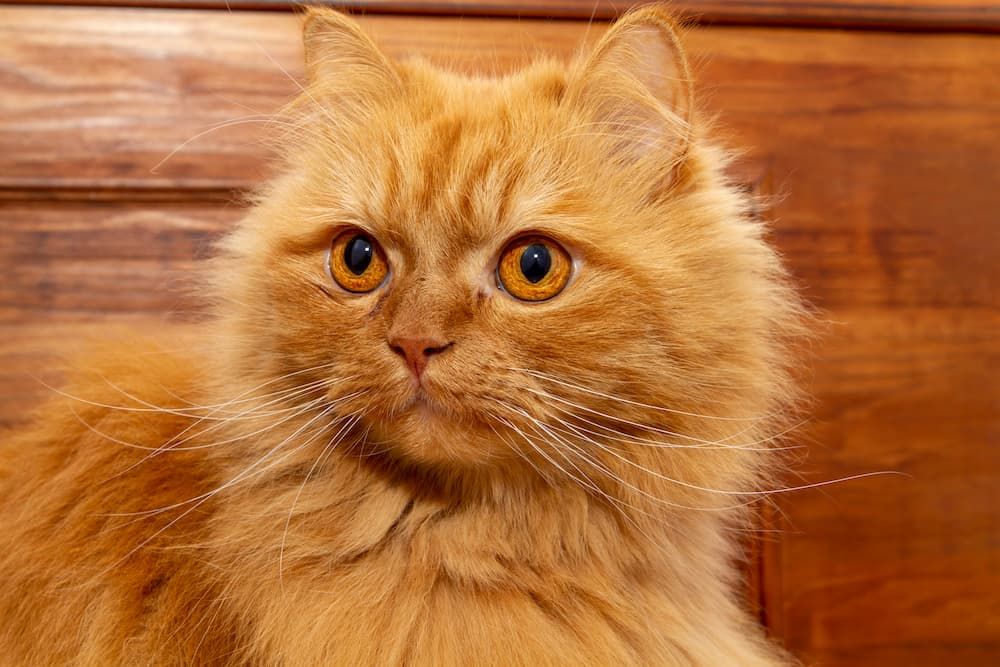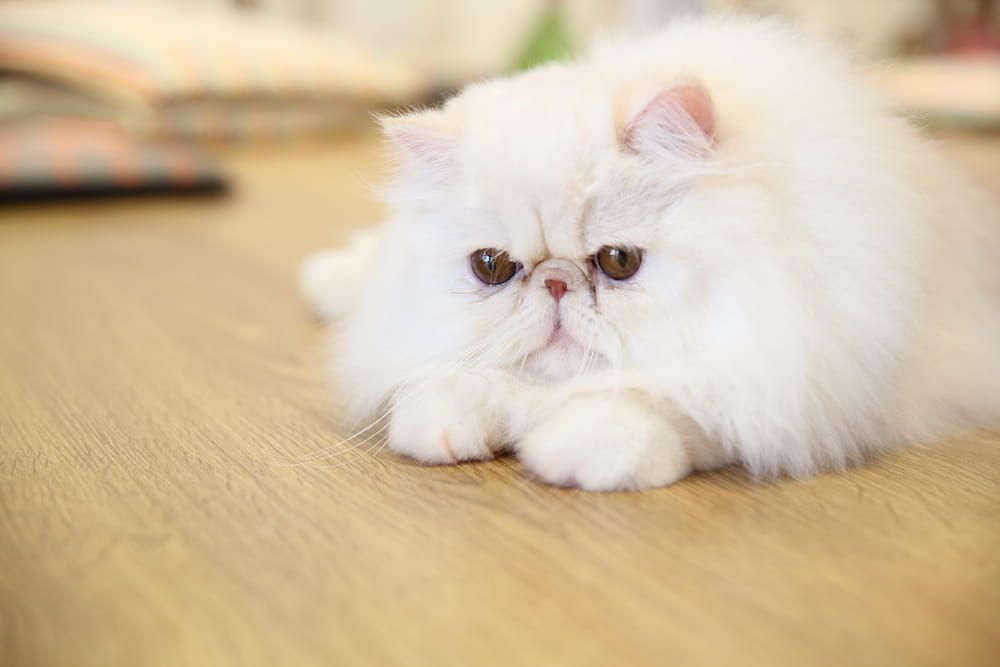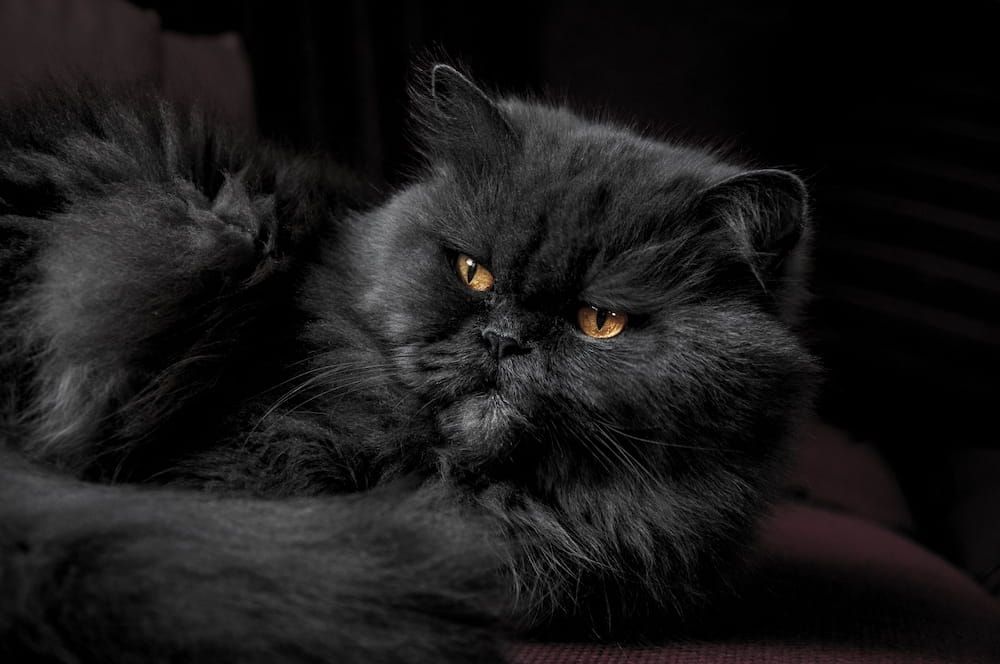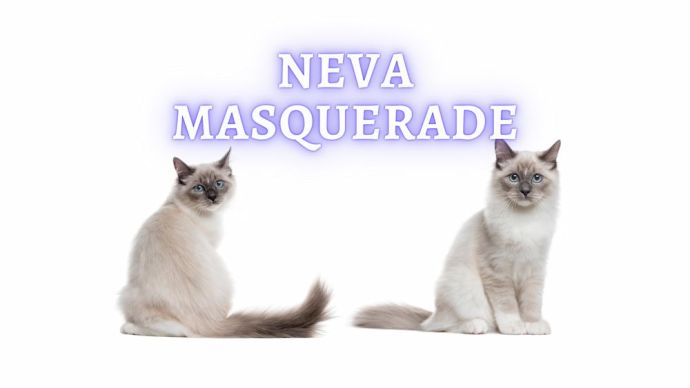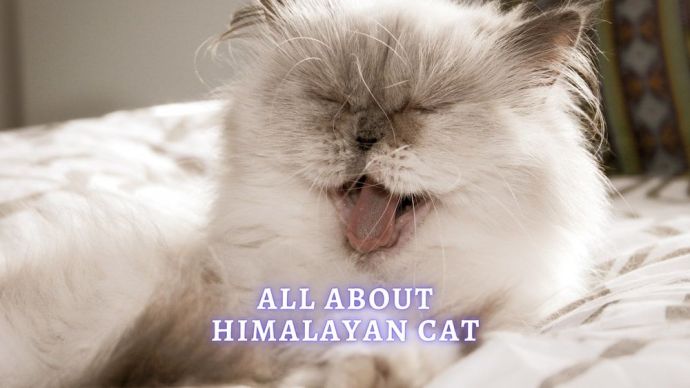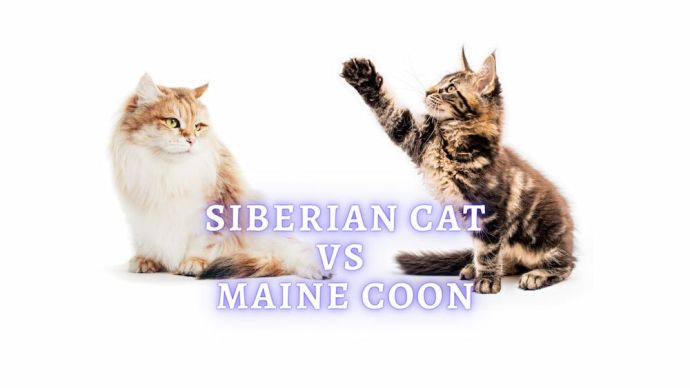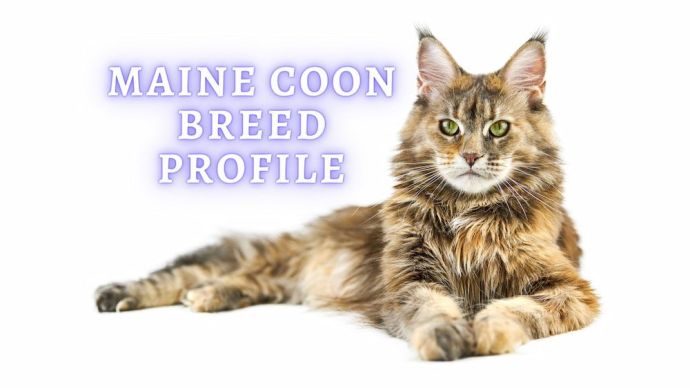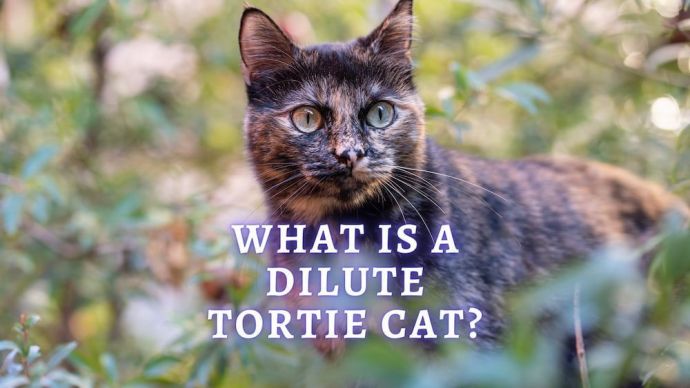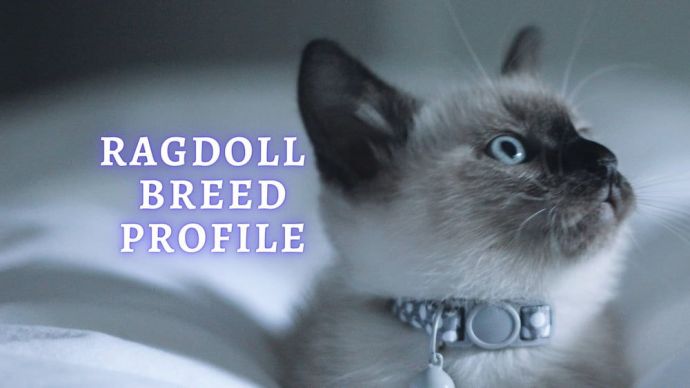Persian Cat: Personality, Lifespan, Cost
Written by:
Author: Alina Andreeva
Alina A. is a professional writer, editor, and pet-lover. She has published over 50 articles on how to care for pets properly. Alina has been writing articles for 3 years, so she has considerable experience in this niche. Her natural curiosity helps her to expand her knowledge and learn new pet care life hacks, which will make your life much easier.
View all 79 articlesLearn about our editorial process and veterinary review board.
Viewed: 330
Updated on: 03/23/2022
The quiet and regal Persian cat is known for being proud. Possessing dignity, he commands an air of royalty. This relaxed feline doesn’t like to be bothered by loud kids or pets, but he is not quick to hiss or scratch.
If you treat your Persian well, he will reward you with camaraderie and flop happily into your arms. He enjoys gentle brushing of his hair and good petting. If you want an affectionate lap cat who will return all your love and respect, the Persian is the right pet for your family.
Characteristics
| Weight | 7-12 pounds |
| Height | 10-15 inches |
| Colors and Patterns | more than 80 different colors: silver, white, cream, red, smoke, blue, black, chocolate, lilac, etc. |
| Lifespan | 10-18 years |
Persian Cat Breed History
The Persian is one of the oldest feline breeds. This elegant breed originated in Mesopotamia, which was later known as Persia and is now modern-day Iran. The long hair is considered to be the result of a natural mutation, and his stunning beauty caught the interest of an Italian nobleman and traveler Pietro Della Valle, who brought the first longhaired cats to Europe in the seventeenth century. Back then, the Persians had luxurious grey hair, but due to selective breeding, you can now find cats of this breed in a kaleidoscope of colors.
Until the end of the nineteenth century, when cat breeding and showing gained popularity, long-haired felines from different exotic countries were known as “Asiatic” cats and were often bred together. At the cat show at Crystal Palace in 1871, the long-haired beauty was among the breeds exhibited. In the Victorian era, they were particularly popular because of the queen’s love for the breed.
Thanks to selective breeding, cat lovers began to mold the Persian cat to his current appearance. Today, the feline has a round head, short face, snub nose, pudgy cheeks, small rounded ears, large eyes, and a strong body. They had longer hair than that of the Angora cat, and their legs were shorter. The Persian soon edged out the Angora cat.
They were brought to America at the end of the nineteenth century, where they also became the country’s sweethearts, surpassing the long-haired Maine Coon cat, which had once held a valuable place as an American favorite. A little over a century later, the Persian cat became one of the most popular cat breeds in the world, valued for his gorgeous appearance and sweet disposition.
Interesting Facts about Persians
- Persians have the longest fur. A cat in Los Angeles, California earned a place in the new Guinness World Records book for having the longest hair in the world. The Himalayan-Persian mix had a coat that reached an astonishing 9in (23cm). The fluffy kitty was named Colonel Meow by his owners because of his “epic frown and fur”.
- Historical figures have loved these cats. Persian cats were very popular among French aristocrats. Also, the British Queen Victoria was very fond of this breed. She had two Blue Persian cats, which increased the popularity of this breed in Britain in those times.
- Two types of Persian cats. Like other ancient breeds, Persians have changed a lot in recent decades. Because of this, there are two types of Persian cats: “modern type” (with brachycephalic features) and “old type” (with a longer muzzle – similar to their ancestors).
- With this breed, you can forget quiet nights. New Persian parents should know one more thing – these felines may snore while sleeping. It’s normal for your kitty to let out loud snores every time he snoozes. This inherited defect is a defining character of all brachycephalic breeds of cats.
- Persians are purr-fect cuddly companions. These cats are known for their gentle temper and sweet disposition. Persians prefer a peaceful environment that matches their calm nature. This breed has the nickname “furniture with fur” due to its laziness. While this kitty can be playful like any other feline, he is usually busy with his precious sleep, especially on your lap.
- This cat has a shorthaired twin. Bred in the 1950s-1960s, the Exotic Shorthair can be easily mistaken for the Persian. Except for the hair length, both breeds are similar to each other. Known as the short-haired version of the Persian, he has a flat face, a round, stocky body, and a snub nose as Persian. The easier grooming of their coat made people call this breed “the lazy man’s Persian”.
- Persians can’t always keep a good relationship with kids. Persians are not the best choice for a noisy house full of kids and dogs, but they do not mind being the object of a gentle kid’s attention or making friends with an amiable dog that does not chase them or otherwise break their peace.
Persians Personality
A majestic and docile Persian is a decoration of any house. He likes sitting in a lap and being petted by those who are sharp enough to recognize his excellent qualities. The Persian doesn’t mind playing with kind kids who gently comb his hair and serve his tea at their parties. The Persian has an amiable disposition, but he is a hard-to-please cat. The feline reserves his attention for family members and those few guests whom he believes he can trust.
Persians don’t make noise; they are calm cats who prefer a serene atmosphere at home. With large, charming eyes and a soft, pleasant voice, Persians let the owner know about their simple needs: regular meals, a little playtime with a toy mouse, and a lot of love which they return eagerly. This cat is unlikely to climb up your curtains or jump on a kitchen table. He is perfectly happy to spend time walking on the floor or lying on a sofa. When there is nobody at home, the Persian is content to adorn a piece of furniture until you come home and can admire his beauty and devote your attention to him, which the cat eagerly receives but never claims.
Persians are not the most energetic of cat breeds. They prefer to find a nice warm spot to relax than to enter into any family activities. When it comes to being trainable, Persians are considered to be slow learners.
| Potential for playfulness | 2 |
| Activity level | 1 |
| Friendliness to other pets | 4 |
| Friendliness to children | 4 |
| Grooming requirements | 5 |
| Need for attention | 4 |
| Affection toward its owners | 4 |
| Intelligence | 2 |
| Independence | 2 |
Exercise Requirements
Persians are not very energetic and like to lie around the house. So cat parents should pay attention to both their diet and exercise. This breed sometimes has to be coaxed into getting some exercise. Try to play with your kitty every day so that he gets some exercise. Persians like to get busy with interactive toys, balls, and catnip mice.
Start by planning your playtime. Just as your fluffy friend knows when you give food to him and waits for you to come home after work, he needs to get used to play sessions at a fixed time every day. You don’t have to play with your cat all evening long –15 minutes a day of exercise will help your sweetheart keep in good shape and strengthen your bonds with him.
This is a purr-fect way to help your Persian kitten burn off all of that pent-up energy. If your little bundle of fur goes crazy at night, climbing and meowing, you can play with your fur baby about an hour before bedtime. It will help him to calm and get ready to rest.
READ MORE: How much Exercise does a Cat need?
Health
If you take care of your Persian cat, he will not have health problems. However, they sometimes can suffer from hereditary diseases.
The most vulnerable organs are the cat’s kidneys. [1] Often a cat can inherit polycystic kidney disease, which leads to renal failure — a severe and dangerous illness.
Often kittens inherit progressive retinal atrophy. [2] It appears between one and two months of the cat’s life. At four months, the kitten completely loses his sight.
The structural features of the muzzle lead to diseases of the cat’s nose and eyes. If you don’t wipe them, they can get infected. Also, due to the flat structure of the skull, the Persians can have problems with their teeth, including dark plaque, inflammatory processes, and, if severely neglected, the loss of teeth. Unhealthy teeth can appear as a symptom of other internal diseases.
The most life-threatening disease is hypertrophic cardiomyopathy. [3] It appears at any age, as this is inherited from parents, but older cats suffer from this most often. Sudden cardiac arrest and death are possible. Of all the heart diseases in cats, this disease takes first place; therefore, when choosing a kitten, you need to study its pedigree well for the inheritance of such a disease.
Persian Cats Care
The Persian needs a good deal of regular grooming because of his long fur. If you ignore combing, the cat’s coat will quickly become matted and tangled. It can be very painful for the cat if the coat is not groomed regularly. That beautiful hair doesn’t stay clean on its own. Brush your cat’s fur gently but thoroughly once a day and bathe him every month to keep his fur shiny, soft, and dirt-free. If you start bathing your Persian as a kitten, he will soon get used to it and will not scratch you during baths. Use a special shampoo for long-haired cats. Dry and comb his fur to ensure it doesn’t tangle.
Wipe the cat’s eyes every day to prevent under-eye stains from excessive watering. As with all cats, daily dental hygiene is best, as this helps to prevent periodontal disease. Cut his nails regularly.
Persians don’t like to live in dirty environments, so clean their litter box daily.
Price
Due to being pure breeds, Persian felines can be pretty costly. You can pay for a kitten anywhere between $1,000 to as high as $5,000. Prices may vary because many factors come into play. Here are some of them:
- Location. If you live in a city, you will have to pay more. This is due to the higher demand for this breed in urban areas. Persian cats are usually cheaper in the countryside. However, they can be the same in color and such go in rural and urban areas.
- Lineage. A purebred Persian kitty with properly registered parents will usually be more expensive than an uncertified one. On top of that, if his parents turn out to be of show-quality and have won multiple awards, be prepared to dig deep into your pockets.
- Type. There are two types of Persian cats you can choose from – show-quality and doll-face. Show-quality cats have short flattened noses and large eyes. Whereas doll-face Persians have standard pointed snouts and rounder faces. Show Persians are more costly than doll-face ones, as they are rarer and the demand for such cats is higher.
- Color. A rare color can also raise the price dramatically. Persian kitties with highly coveted colors such as white are usually on top of the price range.
- Gender. Female Persian cats cost more than males as they are capable of reproducing offspring. However, after spaying the feline, there is not much difference.
- Age. Kittens will come at a higher price than their developed counterparts. The demand for little bundles of fur is also higher, as most cat parents prefer to see their kitten turn into a grown-up feline in front of their eyes.
- Breeder. Buying a Persian kitten from a reputable, licensed breeder will be more expensive than a cat found online. However, this pet comes with a health guarantee and proper documentation.
Rescue and Adoption
If you are looking for a Persian, but don’t want to shell out a ton of money, you can adopt or re-home one. It will be quite difficult to find a Persian kitten in a shelter. But adult Persians, both purebred or mixed, end up looking for new homes quite often. This is usually not the cat’s fault. Sometimes, people bite off more than they can chew, i. e. they cannot cope with grooming or other feline needs. If you feel you can, check your local shelters or contact rescue groups.
Whether you take a kitten or an adult cat, schedule regular wellness visits with your vet. They will detect a health problem if any and will give advice on your feline’s nutrition and regimen.
Persian Cats Lifespan
Persians usually live for 12 to 18 years, with an average of 14 years. Still, few cats can live to be 20, those who are healthy, fit and well cared for. However, since this is a pure breed, they are prone to hereditary diseases that can shorten their lifespan.
Other factors affecting the life expectancy of the Persian are:
- Diet – Diet plays a significant role in your kitty’s well-being. This breed needs food rich in protein and omega fatty acids. The right diet can extend their life for years. The food you choose must be free of by-product meals and artificial additives. These ingredients are harmful to felines if used consistently.
- Lifestyle – Persian cats should live in a safe, clean and pest-free environment. They cannot stay in dusty areas as they have breathing issues. Persians also need mental stimulation. Interactive toys will keep them on track and support their predatory instincts.
- Vaccinations – The Persian’s immune system is not well equipped to protect itself from illnesses and flu. So this cat needs preventive measures such as vaccinations.
- Indoor or outdoor – The life expectancy of an outdoor Persian cat will be shorter than that of an indoor kitty. Outdoors, a cat is exposed to many threats and dangers such as other animals, cars, etc.
READ MORE: Best Wet Cat Food
The bottom line
Placid and gentle, Persians are indoor-only felines. This sedentary breed craves a life of tranquility. Therefore these cats are not recommended for noisy households, although they can make great friends for seniors or single people and don’t mind being left alone from time to time.
Having long hair, they are high maintenance cats. So if you don’t mind combing your cat every day, then this is the breed for you.
FAQ
What is the personality of a Persian cat?
Persian felines are calm, sweet and caring. They like nothing more than just loafing around and have an affinity for constant napping. Persians are known to be quiet and loving toward their human companions. These cats, unlike other breeds, love being picked up. Also, Persians enjoy curling up for a nap in their owner’s lap.
Do Persian cats like to cuddle?
Gentle and cute Persians love to be held and enjoy the attention they receive. Most Persians will eagerly sit in their owner’s lap. But remember that cats may not always want to be picked up, so treat her wishes with respect.
Do Persian cats get lonely?
When you leave your Persian cat for too long, he can get bored or even experience separation anxiety. Make sure your sweetheart has toys to play with. Above that, before and after he is alone at home, spend a lot of time playing with your cat and petting him so that your fluffy friend knows you love him.
Are Persian cats moody?
Persians are gentle if you treat them with kindness. If you notice aggressive or unwanted behavior, you can consult an animal behaviorist to correct what you define as “rude” behavior.
Article Source:
- Stebbins, K. E. “Polycystic Disease of the Kidney and Liver in an Adult Persian Cat.” ScienceDirect, sciencedirect.com/science/article/abs/pii/0021997589901114.
- Rah, HyungChul, et al. “Early-Onset, Autosomal Recessive, Progressive Retinal Atrophy in Persian Cats | IOVS | ARVO Journals.” Investigative Ophthalmology & Visual Science, 1 May 2005, iovs.arvojournals.org/article.aspx.
- Jenkins, Tiffany L., and Ryan N. Jennings. “Pulmonary Capillary Hemangiomatosis and Hypertrophic Cardiomyopathy in a Persian Cat.” SAGE Journals, journals.sagepub.com/doi/full/10.1177/1040638717723686.
 Cat Care Why Does My Cat Attack My Legs? 10 Reasons Why and What To Do About It (Vet-Approved Advice)
Cat Care Why Does My Cat Attack My Legs? 10 Reasons Why and What To Do About It (Vet-Approved Advice) - 46013
- 21
 Cat Veterinary Tips Cat Stomach Gurgling: Vet Advice on Why is Your Cat Stomach Gurgling?
Cat Veterinary Tips Cat Stomach Gurgling: Vet Advice on Why is Your Cat Stomach Gurgling? - 36469
- 4
 Cat Veterinary Tips My Cat Lost its Voice: Can Cats get Laryngitis? (Vet Advice)
Cat Veterinary Tips My Cat Lost its Voice: Can Cats get Laryngitis? (Vet Advice) - 23554
- 13









